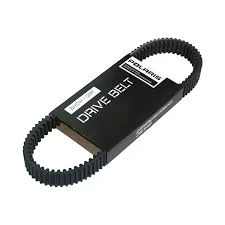- Arabic
- French
- Russian
- Spanish
- Portuguese
- Turkish
- Armenian
- English
- Albanian
- Amharic
- Azerbaijani
- Basque
- Belarusian
- Bengali
- Bosnian
- Bulgarian
- Catalan
- Cebuano
- Corsican
- Croatian
- Czech
- Danish
- Dutch
- Afrikaans
- Esperanto
- Estonian
- Finnish
- Frisian
- Galician
- Georgian
- German
- Greek
- Gujarati
- Haitian Creole
- hausa
- hawaiian
- Hebrew
- Hindi
- Miao
- Hungarian
- Icelandic
- igbo
- Indonesian
- irish
- Italian
- Japanese
- Javanese
- Kannada
- kazakh
- Khmer
- Rwandese
- Korean
- Kurdish
- Kyrgyz
- Lao
- Latin
- Latvian
- Lithuanian
- Luxembourgish
- Macedonian
- Malgashi
- Malay
- Malayalam
- Maltese
- Maori
- Marathi
- Mongolian
- Myanmar
- Nepali
- Norwegian
- Norwegian
- Occitan
- Pashto
- Persian
- Polish
- Punjabi
- Romanian
- Samoan
- Scottish Gaelic
- Serbian
- Sesotho
- Shona
- Sindhi
- Sinhala
- Slovak
- Slovenian
- Somali
- Sundanese
- Swahili
- Swedish
- Tagalog
- Tajik
- Tamil
- Tatar
- Telugu
- Thai
- Turkmen
- Ukrainian
- Urdu
- Uighur
- Uzbek
- Vietnamese
- Welsh
- Bantu
- Yiddish
- Yoruba
- Zulu
Nov . 27, 2024 06:26 Back to list
Four-Ply Auto Belts for Reliable Performance and Extended Durability
Understanding the Importance of Auto Belts A Look at the 4PK Drive Belt
The automobile industry is an intricate web of components working harmoniously to ensure the efficient operation of vehicles. Among these components, belts play a crucial role, acting as connective tissue between various parts of the engine. One such essential component is the auto belt, specifically the 4PK drive belt, which has garnered attention for its reliability and performance.
What is a 4PK Drive Belt?
The term 4PK refers to the configuration of the drive belt, which consists of four ribs or grooves. This design enables better grip and enhanced power transmission from the engine's crankshaft to various accessories, such as the alternator, power steering pump, water pump, and air conditioning compressor. The “PK” designation indicates the belt's profile, designed to fit snugly into the corresponding pulleys, ensuring maximal efficiency.
The Functionality of the 4PK Drive Belt
The 4PK drive belt serves several vital functions in a vehicle. Firstly, it transfers power from the engine's crankshaft to multiple components, allowing them to operate effectively. The smooth rotation of these components is essential for the overall performance of the vehicle. For instance, the alternator generates electricity to recharge the battery and power electrical systems, while the water pump circulates coolant to maintain optimal engine temperature.
Moreover, the design of the 4PK drive belt allows for a significant surface area to come in contact with the pulleys. This characteristic helps in minimizing slippage, which can lead to inadequate functioning of the accessories. Additionally, modern 4PK drive belts are often manufactured from high-quality materials that offer enhanced durability and resistance to wear and tear, ensuring longevity.
auto belt 4pk

Signs of Wear and When to Replace
Like any automotive component, the 4PK drive belt is susceptible to wear over time. Regular maintenance and inspections are essential to ensure the belt remains in optimum condition. Common signs of a failing drive belt include squeaking or squealing noises, noticeable cracking or fraying, or a sudden loss of power to accessories. In such cases, immediate replacement is advisable to prevent further damage to the vehicle's engine or components.
It's generally recommended to replace the drive belt every 60,000 to 100,000 miles, depending on the vehicle's make and model, as well as driving conditions. However, this can vary, so consulting the vehicle’s owner manual or a qualified mechanic is crucial for personalized advice.
Choosing the Right 4PK Drive Belt
When selecting a 4PK drive belt, it’s essential to consider factors such as the vehicle's specifications, the quality of the belt, and the reputation of the manufacturer. Opting for OEM (Original Equipment Manufacturer) parts can ensure compatibility and reliability, as these belts are designed specifically for the vehicle model. Alternatively, high-quality aftermarket options can also provide excellent performance, but it’s essential to research and choose reputable brands.
Conclusion
The 4PK drive belt is a critical component of the automotive system, often overlooked yet pivotal for the smooth operation of various engine accessories. Understanding its functionality, signs of wear, and proper maintenance can help vehicle owners ensure their automobiles run efficiently. Regular checks and timely replacements can save costly repairs in the long run, ensuring that your vehicle remains reliable for years to come. Investing in quality auto belts, especially the 4PK variety, is not just about maintaining performance; it's about creating a safer driving experience and preserving the longevity of your vehicle.
-
Upgrade Power Steering Pump Belt for Smooth, Quiet Operation
NewsAug.27,2025
-
Precision Timing Belt & Chain: Engine Performance & Durability
NewsAug.26,2025
-
Precision Lathe Drive Belts: Durable & Reliable Performance
NewsAug.25,2025
-
84.5 Serpentine Belt: Durable & Precision Fit for Your Engine
NewsAug.24,2025
-
Premium Ribbed Drive Belts for Quiet Power Transmission
NewsAug.23,2025
-
High-Performance Vehicle Timing Belt for Engine Precision
NewsAug.22,2025

